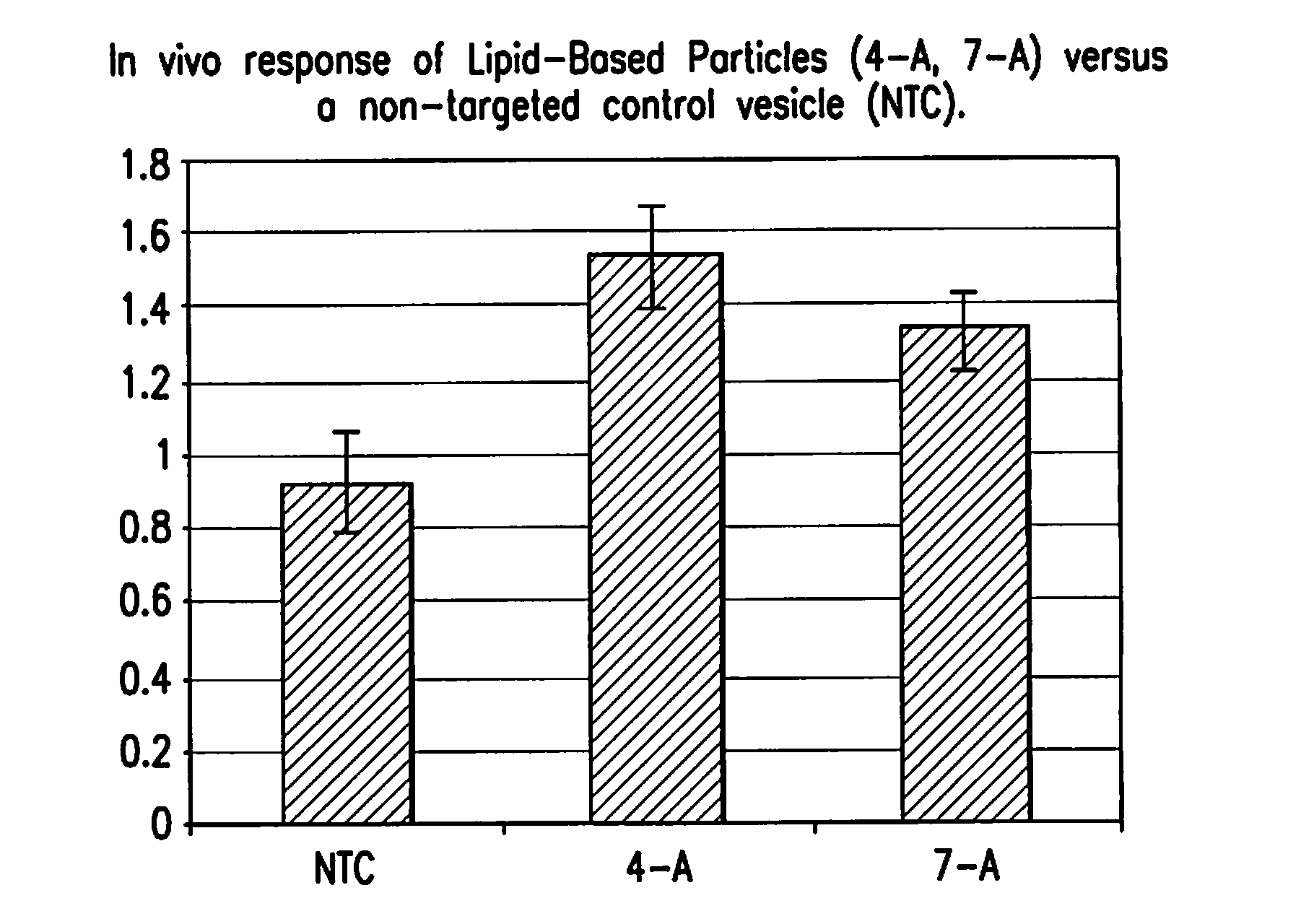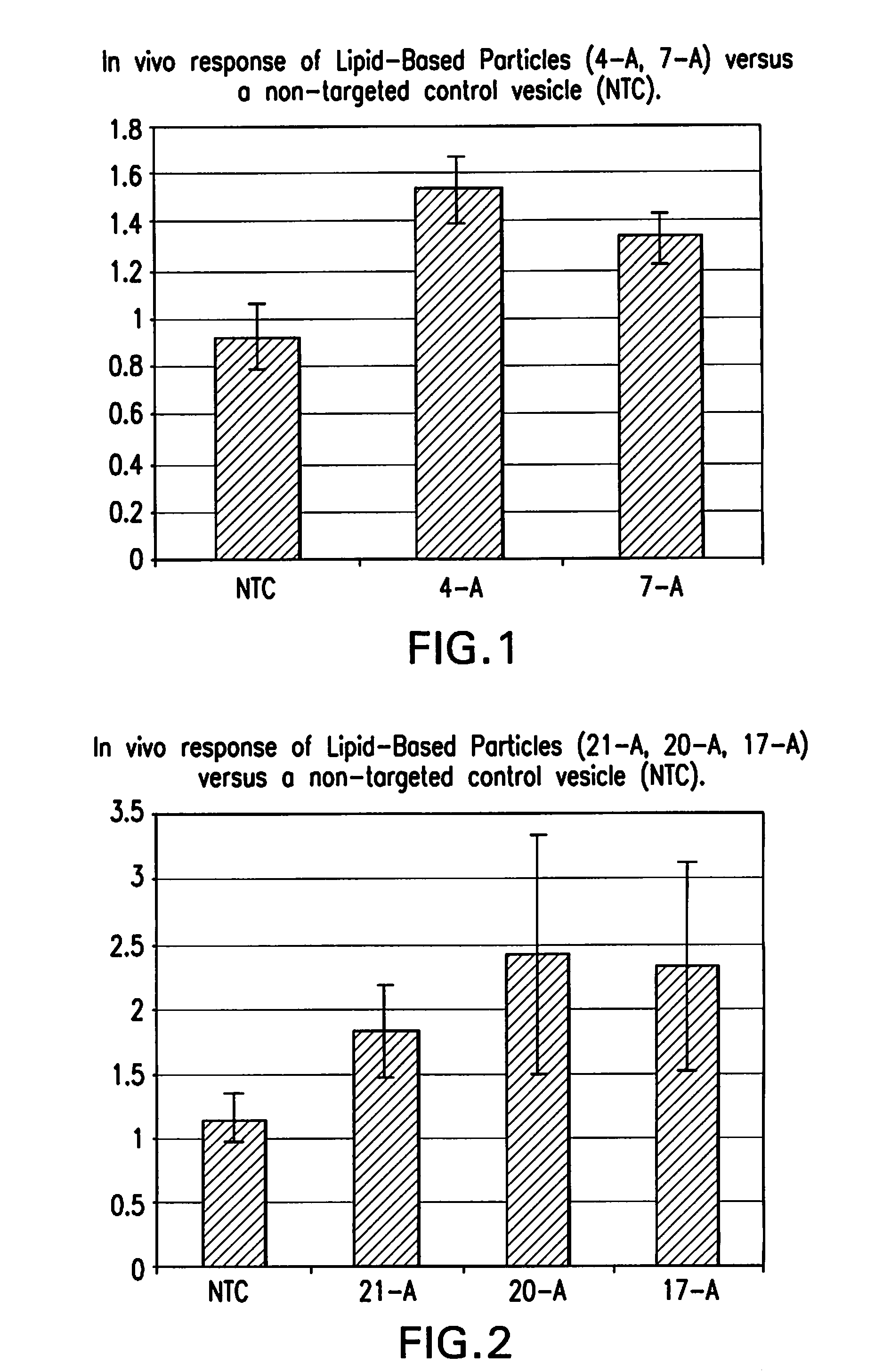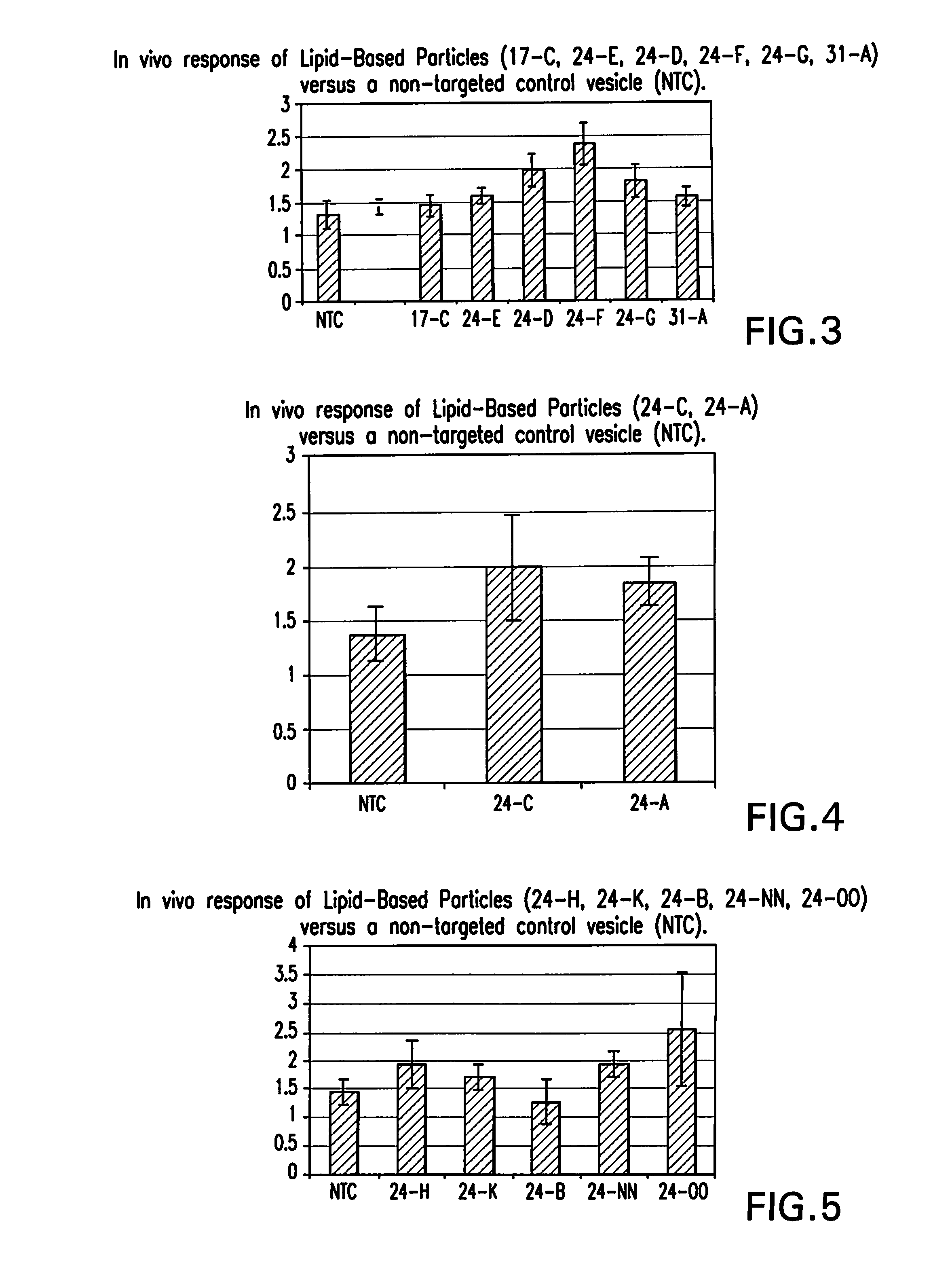Cationic Lipids and Uses Thereof
a technology of cationic lipids and lipids, applied in the direction of drug compositions, genetic material ingredients, organic chemistry, etc., can solve the problems that complexes to date have not been found to successfully deliver therapeutic agents, and achieve the effect of decreasing tumor volum
- Summary
- Abstract
- Description
- Claims
- Application Information
AI Technical Summary
Benefits of technology
Problems solved by technology
Method used
Image
Examples
example 1
1-{3,4-bis[(9Z,12Z)-octadeca-9,12-dienyloxy]butyl}piperidine
example 1a
2-(2,2-dimethyl-1,3-dioxolan-4-yl)ethyl 4-methylbenzenesulfonate
[0380]2-(2,2-dimethyl-1,3-dioxolan-4-yl)ethanol (5 g) was added to dichloromethane (86 ml) and the mixture was cooled to 0° C. To this solution was added triethylamine (6.9 g, 9.6 ml), tosyl chloride (6.5 g) and 4-(dimethylamino)pyridine (0.42 g). The reaction was allowed to stir at room temperature overnight. The reaction was quenched with saturated NH4Claq and diluted with ethyl acetate. The aqueous layer was extracted twice with ethyl acetate and the combined organics were dried (Na2SO4), filtered, and concentrated by rotary evaporation. The residue was purified by flash column chromatography (Ethyl Acetate / Hexanes 0-100%, Analogix) to afford the title compound. MS (ESI) m / z 300.9 (M+H)+; 1H NMR (400 MHz, CDCl3) δ 7.79 (d, J=8.29 Hz, 2H) 7.35 (d, J=7.98 Hz, 2H) 4.06-4.23 (m, 3H) 4.01 (dd, J=7.98, 6.14 Hz, 1H) 3.51 (dd, J=8.13, 6.90 Hz, 1H) 2.45 (s, 3H) 1.82-1.98 (m, 2H) 1.31 (d, J=18.72 Hz, 6H).
example 1b
1-{3,4-bis[(9Z,12Z)-octadeca-9,12-dienyloxy]butyl}piperidine
[0381]2-(2,2-dimethyl-1,3-dioxolan-4-yl)ethyl 4-methylbenzenesulfonate (Example 1A, 500 mg) was placed in a microwave reaction vial along with piperidine (1-2 eq.), Hunig's base (2 eq) and dioxane (2.2 ml). The reaction was placed in the microwave (Biotage Initiator) for 15 minutes at 140° C. After TLC analysis confirmed completion, 4N HCl (4 ml) was added until the mixture was acidic and the reaction was stirred overnight at room temperature. 6N NaOH was then added until the mixture was basic, and the mixture was diluted with water and extracted (5×, chloroform). The combined organics were dried (Na2SO4), filtered and concentrated by rotary evaporation. The hydrolysis of the acetonide was confirmed by 1H NMR of the crude material in each case. The residue was taken up in toluene (0.2-0.3 M) and NaH (5-10 eq) was added portionwise, slowly at first. The flask was purged with nitrogen and the reaction was allowed to stir for ...
PUM
| Property | Measurement | Unit |
|---|---|---|
| diameter | aaaaa | aaaaa |
| mean diameter sizes | aaaaa | aaaaa |
| mean diameter sizes | aaaaa | aaaaa |
Abstract
Description
Claims
Application Information
 Login to View More
Login to View More - R&D
- Intellectual Property
- Life Sciences
- Materials
- Tech Scout
- Unparalleled Data Quality
- Higher Quality Content
- 60% Fewer Hallucinations
Browse by: Latest US Patents, China's latest patents, Technical Efficacy Thesaurus, Application Domain, Technology Topic, Popular Technical Reports.
© 2025 PatSnap. All rights reserved.Legal|Privacy policy|Modern Slavery Act Transparency Statement|Sitemap|About US| Contact US: help@patsnap.com



